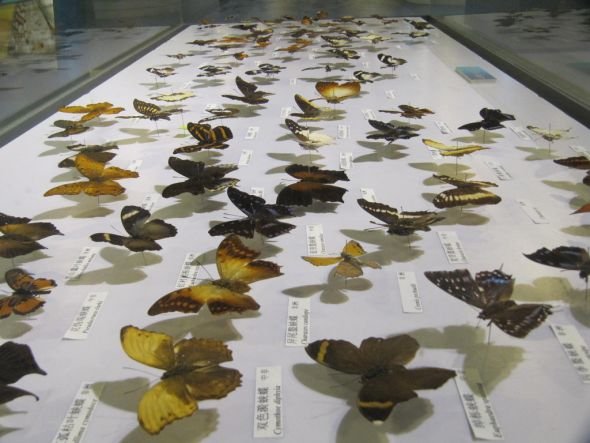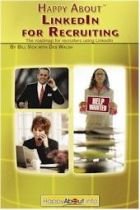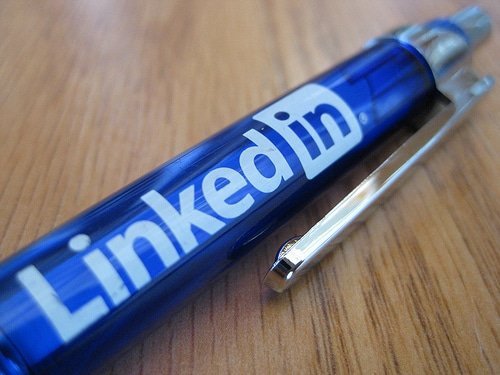LinkedIn: Building Networks not Collections
For first level connections on LinkedIn to happen, I need to first have some form of personal contact

In all the time I’ve been on groups where LinkedIn is discussed, including the Linked Bloggers group I co-moderate, the great staple of discussion has always been what some refer to as the Quality vs Quantity debate.
The discussion revolves around the question of how well you should know someone before you connect with them at the “first level”.
Sometimes the discussion is conducted in fairly either/or terms: either you connect with as many people as possible, or – in the words LinkedIn provides under the box from where you send an invitation – “only invite people you know well and who know you”.
In one of the LinkedIn groups to which I belong, I picked up today on another iteration of this Great Debate. In that instance it was framed in terms of whether you would establish a direct connection with someone you had never actually met (with the implication of having met “in real life” as distinct from just online).
My contribution to that discussion was that I believe there is a sensible line which does not involve either never connecting with anyone you haven’t met or going the open slather of connecting with everyone possible.
I acknowledge the point of view of colleagues and others who argue that you should build the biggest possible network of first level connections, on the basis – as I understand – that this gives you more reach and influence. There are more complex arguments advanced, which I have personally found either too arcane in their theoretical frameworks or simply not convincing enough for me and for where I focus my business activities.

When Bill Vick and I wrote LinkedIn for Recruiting, we devoted several pages to outlining this Quality vs Quantity discussion and included quotes from people with a range of views on the subject. (LinkedIn for Recruiting is now available as a free download.)
My approach is that I check out the credentials of the person wanting to connect and then offer at least a virtual meeting, preferably a Skype call but sometimes I am ok with an email exchange.
Most of the people I offer this to do not even have the courtesy to respond, which to me says that it would be quite unrealistic to see them as potential business connections. And I never cease to be amazed at the number of people with whom I have had no prior contact and who send me a boilerplate “invitation” with no explanatory info or other courtesy included.
Is that how the butterfly feels when the fellow with the net turns up?
That said, I am privileged to be connected to a group of what I would call high quality people, all 644 of them (today’s count), who in turn can connect me to 363,400 other professionals at two degrees removed and then to 12,934,100.
In my book that’s a pretty good network. YMMV
By the way, in the four hours that elapsed since I started drafting this post, my total LinkedIn network grew by another 700 – not quite 100 an hour, but getting there. 🙂
Image credit: Butterfly collection at the Beijing Art Museum, photo by Ivan Walsh via Flickr, Creative Commons
Des Walsh
Business coach and digital entrepreneur. With coach training from Coachville.com and its Graduate School of Coaching, and a founding member of the International Association of Coaching, Des has been coaching business owners and entrepreneurs for the past 20 years. Over the same period he has also been actively engaged in promoting the business opportunities of the digital economy. He is a certified Neurolinguistic Programming (NLP) coach, and a certified specialist in social media strategy and affiliate marketing.

See i believe this is more the case with Facebook and definitely Skype as it has the ability for that person to reach right into your home PC or direct to your mobile (diverted from skype). You don’t want hundreds of people on the channel screaming and yelling with those annoying notifications Skype uses each time, they sign-in but I wouldn’t call 644 massive but agree its probably best to re-examine if its been a bit too much of a numbers game.
Thanks for making people think about social outside of Facebook 🙂
.-= David´s last blog ..Alcon does better at seo =-.
Thanks David
I wouldn’t call 644 massive either. But I can say at least three things very confidently:
1) these are trusted connections – not Twitter followers (although some of my Twitter connections are also in the trusted zone, of course)
2) that if anyone wants me to put them in touch with any of those people I expect they will get at least a reply and probably a good hearing (most or all of them know I would not want to waste their time with silly or inappropriate requests)
3) that, as I say, through those 644 people I can reach potentially close to 13 million people, just at three removes
Who needs 5 degrees when 3 degrees give you 13 million?
I will no doubt increase the “inner circle” from its current 644, but I will do that methodically and in line with the policy I have followed consistently since I joined LinkedIn in (gasp!) October 2004.
Mostly i see it as a improved replacement for those books of business cards I was told I had to use when I first got into Business in 2001. The only problem is I’m seeing Facebook style features being added to stay cool such as “like” options and having the ability to follow companies “fanpages”…
.-= David´s last blog ..Alcon does better at seo =-.
The point of quality over quantity is a paradigm that we face on many social media platforms. Your focus on Linked In is rather interesting due to its business connotations, yet each social media platform has its own culture. To put a different spin on this, you could segment users on each platform into groups which I think would help your analysis.
Gladwell segments them into three groups connector, marven and sales people. I think its fair to say that segmenting different people into groups is a good way to look at social media and the way which it is used. In the end it is the users that decide how they want to use it. For some, quality is important, others perhaps quantity.
Nick
You’re right in saying that it’s the users who decide how they want to use it. At the same time, there is a fair bit of experience now as to what works in various contexts and what doesn’t. What bothers me is when people who have had success, in their view, with one approach, start proclaiming and teaching that as the *only* way.
Also, on the quality vs quantity issue, I believe now that is inappropriately binary. First there is the point you make, by implication at least, that there can be a range of sub-groups (whether the connector, maven, sales people categorisation works in every case I would question; for example, recruiters are usually looking for candidates and/or hirers and within those categories they will have sub-categories, for example dividing the candidate group into “active” (i.e. actively seeking a new position) and “passive” (not seeking but could be interested if contacted appropriately), but recruiters will also be interested in connecting with connectors and influencers. Someone should do a study of all this!
By the way, I’ve never known a “quantity” proponent to say that “quality” is not important. 🙂
Good points Des, I think this is a subject that requires a lot of thought into to the behavior of users online. Social networking websites should to keep in mind what type of users subcategories they can expect using there service to therefore meet each users exception. In the end, LinkedIn is a great tool and like many before it, has a self manage model which allow YOU to decide how YOU to use it….
…And I am a big believer in quality too. 🙂